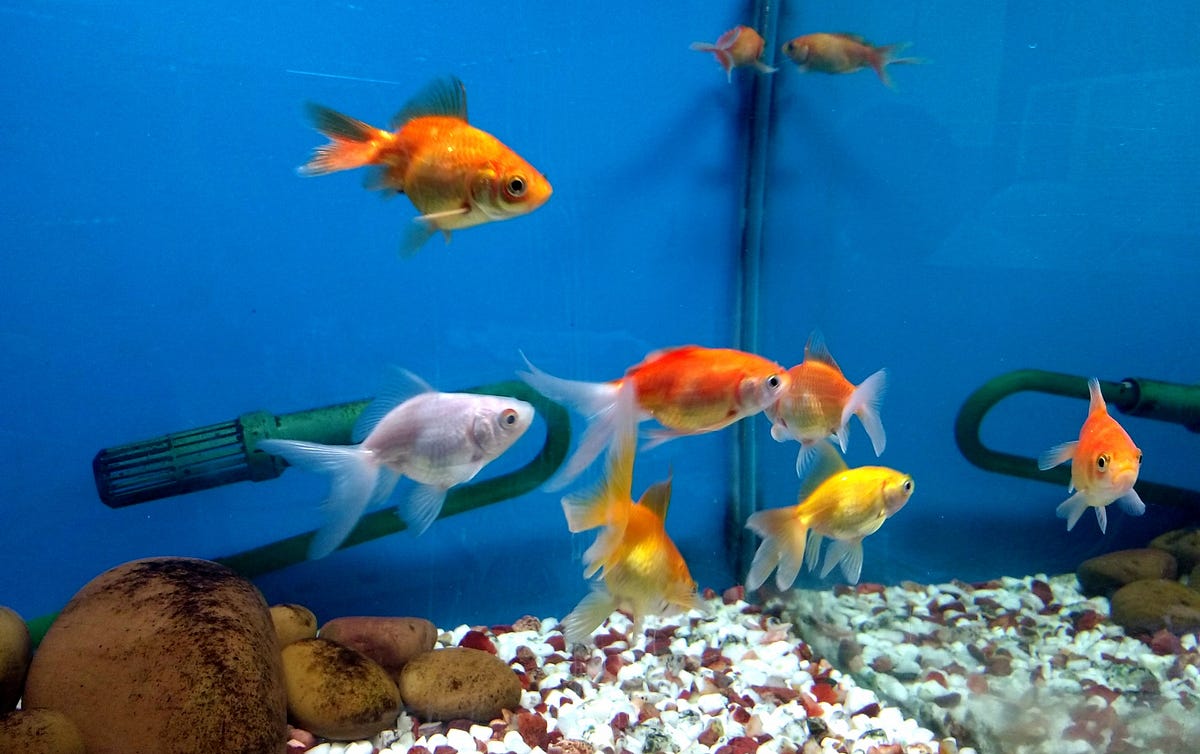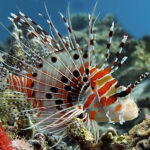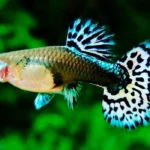Aquarium Fish You’ve invested hours studying the ideal tank, choosing colorful fish, and creating a tiny aquatic utopia. But then, something’s amiss—your fish are hiding, their color is dulling, or they’re swimming frantically. You ask yourself, is something amiss? In most instances, the answer is yes. Your aquarium fish can be stressed, and stress is not just an attitude. It’s a quiet assassin in the aquarium community.
Early detection of the signs is important to avoid disease, aggression, or even death. In this in-depth guide, we’re going to show you what stress in aquarium fish looks like, the most typical reasons for it, and exactly how you can repair the problem before it gets out of hand.
If you’re new to the hobby or a seasoned aquarist, this post will arm you with the information you need to create a healthier, happier tank.

Understanding Stress in Aquarium Fish
Acute vs. Chronic Stress
Acute Stress: Happens suddenly, like during transport or when the tank is cleaned too aggressively. Fish usually recover quickly if the stressor is removed.
Chronic Stress: Ongoing exposure to poor conditions, such as bad water quality or aggression from tank mates, leads to long-term health issues and often death.
Knowing the difference aids in recognising urgency and treatment options.
Common Signs of Stress in Aquarium Fish
Stress occurs in various forms, and paying attention is half the fight.
Erratic Swimming or Darting
If your fish are zipping around the tank, banging against gravel or glass (known as “flashing”), or swimming head-down, they may be attempting to flee discomfort such as parasites or unsatisfactory water conditions.
Hiding Excessively
All fish hide from time to time, but if even active fish like guppies or tetras are always out of sight, something’s amiss. Stress makes them feel exposed and insecure.
Loss of Appetite
One of the first warning signs. A stressed fish will refuse to eat or spit food out. Watch feeding behavior very closely, particularly during transitions in their environment.
Color Fading
Bright colouration is usually a sign of health. If your betta or angelfish becomes pale, stress or disease could be the reason.
Clamped Fins
Fins held close to the body are a sign of distress or discomfort. It usually comes with other signs such as lethargy or loss of balance.
Gasping at the Surface
This usually indicates low oxygen or high ammonia. It’s an emergency—act quickly to test water parameters.
Aggression or Being Bullied
Fish chasing, fin-nipping, or continually being chased are both symptoms and causes of stress.
Lethargy
Floating motionless, particularly at the bottom, is a sure sign that your fish is ill—either physically or psychologically.

Top Causes of Stress in Aquarium Fish
Understanding what’s causing the stress in aquarium fish is the first step to fixing it.
Poor Water Quality
The single biggest stressor in aquarium fish. Excessive ammonia, nitrite, or nitrate, and improper pH or temperature, can poison your fish over time or severely damage them in a short time.
How to Fix:
Test water weekly with a liquid test kit.
Perform regular partial water changes (25–50% weekly).
Use a high-quality filter suitable for your tank size.
Monitor temperature daily.
Overcrowding
Too many fish = too much waste, too much competition for space, and increased aggression.
How to Fix:
Follow the general rule: 1 inch of fish per gallon of water (with exceptions).
Research the adult size of each species.
Consider upgrading to a larger tank or rehoming fish if needed.
Aggressive or Incompatible Tank Mates
How to Fix:
Research compatibility before buying.
Separate bullies into their own tank.
Add more hiding spots and plants to reduce territorial disputes.
Improper Acclimation
How to Fix:
Acclimate new fish slowly by floating the bag and gradually mixing in tank water over 30–60 minutes.
Sudden Changes
Extreme changes in temperature, lighting, or water chemistry shock fish.
How to Fix:
Keep parameters stable.
When cleaning, avoid changing all the water at once or scrubbing everything clean (which removes beneficial bacteria).
Noise, Vibrations, and External Disturbances
Fish are sensitive to their environment. Loud music, tapping on the glass, or sudden movement near the tank will stress them.
How to Fix:
Place the tank in a low-traffic area.
Avoid unnecessary noise or handling.
Insufficient Oxygen
How to Fix:
Add an airstone or bubbler.
Use a filter that disturbs the surface for better gas exchange.
How to Help a Stressed Fish Recover
Diagnose the Root Cause
Are water parameters safe?
Any new additions or changes?
Signs of disease?
Interactions between tank mates?
Quarantine If Necessary
If it is just one fish—or is displaying symptoms of illness—quarantine it to a hospital tank to heal.
Perform a Water Change
A 25–50% water change usually works right away by removing toxins.
Reduce Light and Movement
Reducing stress is all about producing a peaceful atmosphere.
Dim the lights or cover the tank with a towel temporarily.
Avoid sudden movements near the aquarium.
Add Stress-Reducing Products
Commercial products such as Seachem StressGuard or API Stress Coat assist in recovering damaged slime coats and minimizing stress.
Feed Sparingly but Nutritiously
Feed good-quality food and do not overfeed, which contaminates water. In case of an ill fish, try frozen or live foods to activate the appetite.
Add Natural Hiding Spots
Plants, caves, and driftwood provide a sense of security and minimize stress.

Long-Term Strategies to Prevent Stress
Tank Maintenance Schedule
Weekly: Water testing, water changes, gravel vacuuming.
Monthly: Filter maintenance, check equipment.
Daily: Visual inspection, temperature checks, and feeding.
Stable Environment
Fish love routine. Automate lighting, keep it warm, and don’t bother them with unnecessary interruptions.
Enrich the Environment
Dull fish become stressed out, too! Give this a shot:
Changing decor layouts occasionally.
Rotating hiding places.
Adding floating plants or bubble walls.
Observe Your Fish Daily
Spend a few minutes a day observing your fish. Get to know their typical behavior so you’ll know if something’s amiss.
Educate Yourself Constantly
Participate in fishkeeping forums, read revised care guides, and remain curious. The more you learn, the better care you’ll give.
Case Studies—Real Examples of Stress and Recovery
The Gasping Gourami
A hobbyist observed their gourami swimming near the top of the tank and not eating. The test revealed excessive ammonia from overfeeding. A 50% water change and improved feeding corrected the situation in three days.
The Bullied Betta
A betta kept with feisty barbs became listless, his fins shredded and colors dulled. Transferring him to a single tank with silk plants and low flow resulted in a dramatic turnaround within a week.
The Neon Tetra Mystery
A school of tetras hid all the time following the addition of a new filter. The high current made them nervous. Replacing it with a softer sponge filter altered their behavior overnight.

Conclusion
Aquarium Fish: Fishkeeping is half observation, half upkeep. Your fish are always speaking to you—in behavior, if not in words. If you pay attention, you can stave off trouble before it has a chance to become a disaster.
Stress may be hard to see initially, but the damage it leaves behind is far too real. The best news? You get to control building a calm, balanced environment in which your fish not only endure but flourish.
So, spend a minute today observing your aquarium fish. Are they swimming boldly? Eating hungrily? Displaying their colors? If so, then congratulations. You’re getting it right. Aquarium Fish If not, now you know what to do.
FAQs
How long does it take a fish to recover from stress?
Mild stress can be overcome within a few days or hours if the underlying cause is eliminated. Severe or chronic stress could take weeks, especially if it has compromised their health.
How do I know if my water parameters are causing stress?
Test using a liquid water test kit for ammonia, nitrite, nitrate, ph, and temperature. Slight imbalances can cause stress in sensitive species.
Do Aquarium Fish get stressed when you change the water?
They can, particularly with big or abrupt changes. Always match the temperature, dechlorinate the water, and never clean the whole tank at one time.
What’s the best way to calm a stressed Aquarium Fish?
Begin by determining the cause (bad water, aggression, temperature fluctuations). Offer hiding places, reduce the lights, do a water change, and keep the environment constant.
Why is my fish hiding all the time?
Excessive hiding can be triggered by fear, dirty water, excessive light, or harassment from other Aquarium Fish. It’s an important sign of stress.
Should I separate a stressed fish from the others?
If the Aquarium Fish is being harassed, ill, or severely stressed, a separate hospital or quarantine tank will allow them to recover without being harmed again.










